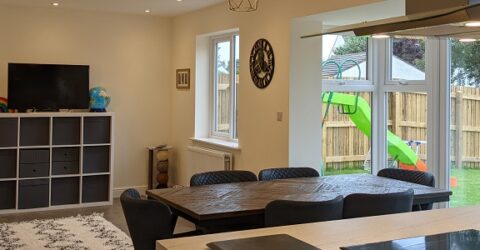How to get perfect WiFi coverage all over your home
Generic broadband routers often struggle to achieve whole-home WiFi coverage, but there are easy ways to boost signal strength.

Such is our reliance on the internet nowadays that sluggish connectivity can be extremely frustrating.
From dwindling attention spans to the meteoric rise of streaming media services, today’s internet is all about instant access – and instant gratification.
Finding yourself beyond the signal range of your home broadband router could be a major obstacle, yet it’s not one you’ll only encounter at the end of the garden.
Today’s ISP-supplied broadband routers are built down to a strict budget. You may not even be expected to return them when your contract ends, such is their disposable nature.
It’s not uncommon to switch ISPs and be posted the same router you’ve already got, just in a different colour or with a different broadband company’s sticker applied to it.
Sadly, this often impacts on achievable range, meaning the far corners of many homes could be beyond WiFi range.
That’s not just a problem for people in sprawling detached villas. It also affects those living in properties with thick walls, multistorey dwellings, and homes sporting lengthy extensions.
Fortunately, while generic ISP routers may not be able to offer whole-home WiFi coverage as standard, there are easy steps and cost-effective solutions to maximising both range and reliability.
Tips for achieving whole-home WiFi coverage
Firstly, try to position your WiFi router as centrally within the property as you can, both vertically and horizontally.
In a terraced house with a long rear extension, that might be on the landing floor behind the staircase.
WiFi routers distribute signals in a roughly spherical orbit, so think about the floorplan of your home and where its epicentre might be.
You may have to invest in a small table or unit to put the router on, since the centre of most houses is at the top of the stairs; in the majority of flats, it’s along the main hallway.
Next, investigate whether your router is clashing with other wireless devices using the 2.4GHz frequency band.
Although many modern routers are dual-band or even tri-band, millions of UK homes depend on wireless data coverage across the same frequency used by baby monitors, alarm systems and many other gadgets.
If you have other wireless devices, experiment with different channels on your router, using the diagnostic settings accessed through a computer’s web browser.
Channels 1, 6 and 11 are worth trying, since they have the greatest distance between one another in terms of which precise frequency they transmit data across.
If the router supplied by your ISP is a cheap generic product, you could replace it with a more powerful off-the-shelf wireless router.
Unless your internet is provided by a full fibre company like Virgin Media or Grain Connect, any router will be able to distribute the data stream arriving into your home.
Even if your broadband is full fibre and requires a bespoke router, you can often plug this ISP-supplied router into a generic one, turning it into a middleman, and use the latter for data coverage.
Third-party routers often prioritise range. They might have more powerful antennae, external aerials or signal-boosting technology integrated into their firmware.
You could also investigate whether your ISP is able to help. Some firms offer mesh networks and range extenders, amplifying signals across a larger area.
This is great if there’s only one part of a property struggling to receive a WiFi signal – a single-storey outbuilding, perhaps, or a loft conversion.
Another way to ensure whole-home WiFi coverage is by purchasing a Powerline adaptor kit.
If your property has a single electrical circuit linking every room – and most do – plugging your router into the mains distributes broadband data to every plug socket.
You can then connect individual devices to the mains via as many dedicated Powerline satellite adaptors as you need, effectively hardwiring them to the router.
Despite their WiFi-boosting credentials, there’s nothing technical about Powerline adaptors. They resemble plug timers, but are far easier to configure, and need no ongoing maintenance.






